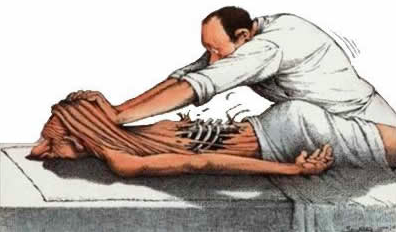I think one of the biggest misconceptions about a deep tissue massage is the actual meaning of a deep tissue massage. Most clients (and even a few massage therapists...) think that applying heaps of pressure equals a deep tissue massage, which is not the case.
The term "deep tissue massage" actually has nothing to due with the amount of pressure, but rather the layers of deep tissue and fascia and connective tissue being addressed to correct any dysfunction in that area.
A deep tissue massage should be slow and thorough, going layer by layer through the muscle and connective tissue in the area of concern. There should also be increased concentration on any trigger point or adhesions (knots) that are found along the way. If any abnormality in the tissue is found, rather than forcing and applying tonnes of pressure all at once, the area should be work carefully with specific pressure being applied to the trigger point or adhesion. The best results will happen when the tissue is allowed to respond on it's own and release under a slower, more focused approach.
Just like anything else in anything in life, if you take the more forceful way, you'll usually be met with more resistance. Muscles always tend to "push back" or go completely tense when copious amounts of pressure are applied without being warmed up before hand. And with that approach nothing will be gained except maybe some bruising through the following day(s).
Because these techniques can be addressing some of the deepest layers of muscles and/or are breaking down any scar tissue, adhesions, "stuck" together muscles layers and fibres, there will be some discomfort and may be some soreness the following day.
During the session it may feel intense or sore, so it's best to communicate with your therapist your level of comfort. A good rule of thumb is to never go over a 6-7 on your pain scale. If you're finding yourself holding your breath, or becoming super tense, the pressure is too deep for you.
On the flip side, deep pressure massage allows the muscles to release gradually, stimulates the circulatory system and eases your general aches and pains. Deep pressure will need to be applied before any sort of deep tissue work can begin (as explained above). Some relaxation massages will be a deeper pressure depending on what the client is after during their massage. Some people prefer a deeper pressure for relaxation, others prefer medium to very light pressure, it completely up to you! With any sort of deep pressure work you can always ask for more or less pressure throughout the massage.




